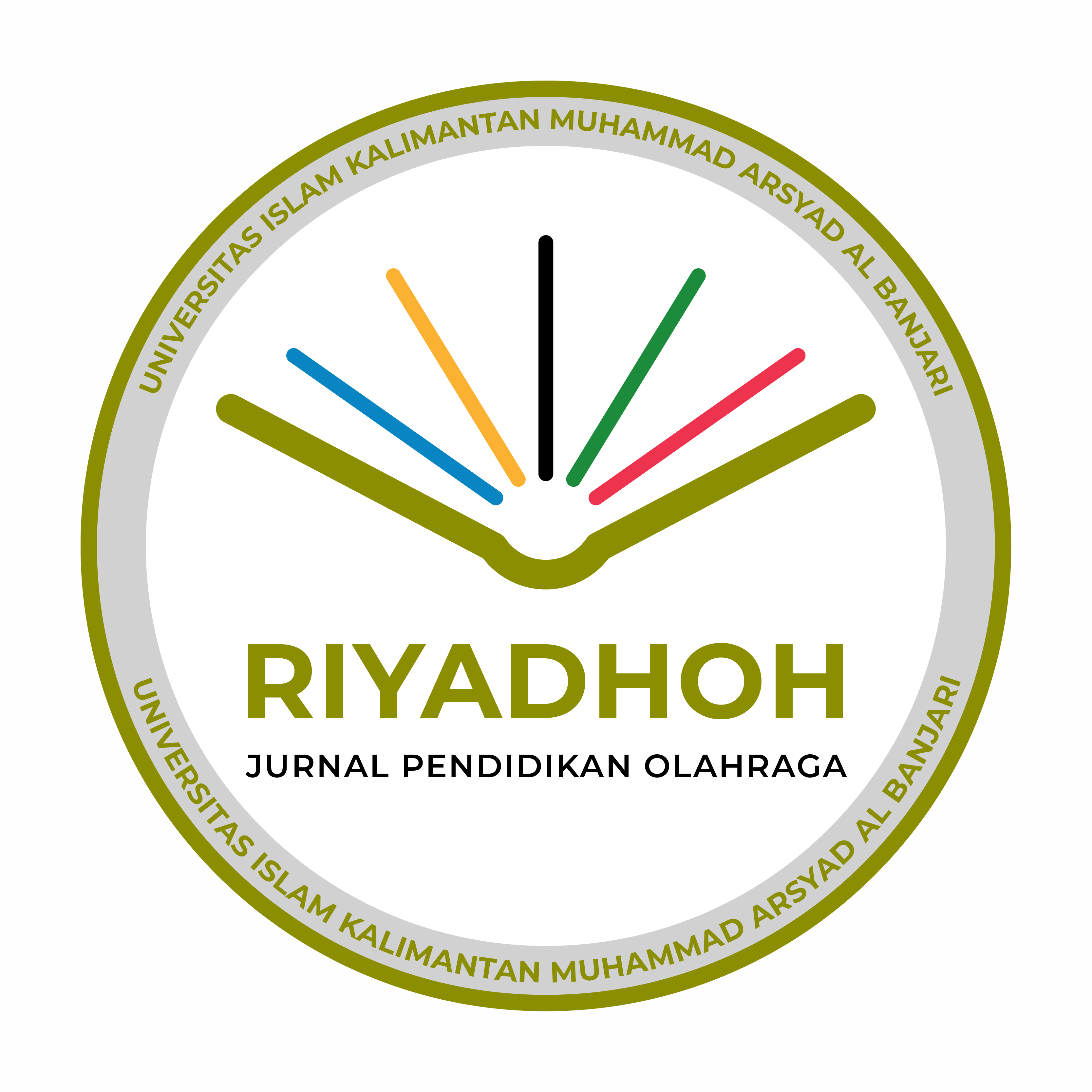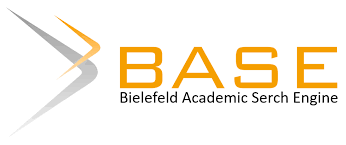LEVEL OF ACTIVITY STUDENTS INTELLECTUAL DISABILITY IN PARTICIPATING PHYSICAL EDUCATION LEARNING: A Systematic Literature Review
(1) Pendidikan Jasmani (FPOK) UNIVERSITAS PENDIDIKAN INDONESIA
(2) Pendidikan Jasmani (FPOK) UNIVERSITAS PENDIDIKAN INDONESIA
(3) Pendidikan Jasmani (FPOK) UNIVERSITAS PENDIDIKAN INDONESIA
(*) Corresponding Author
Sari
Activeness is part of the physical education learning objectives that must be achieved. What is meant by activeness is a child who is actively moving. The aim of this research is to find out the level of activity of students with intellectual disabilities in participating in physical learning. This research was guided by PRISMA (Preferred Reporting Items for Systematic reviews and Meta-Analyses) using the Google Scholar database. Based on 4 selected articles, this research identified the survey level of activity of students with intellectual disabilities in physical education learning. In the articles that have been reviewed, the first article conducted research at the Extraordinary Primary School, the second article conducted research at the Jombang State Special School, the third article conducted research at the C Tunas Harapan Karawang Extraordinary Junior High School, and the last article conducted research at the School. Extraordinarily Trustworthy. The method used in the four articles is a survey method with data collection using interviews, observation and document collection. After identifying the level of activity of mentally retarded students, it can be said to be active. Based on the research results and conclusions, recommendations are directed to future researchers to also conduct research on factors inhibiting the activeness of mentally retarded students in participating in physical education lessons.
Kata Kunci
Teks Lengkap:
PDFReferensi
Dian, A., Simanjuntak, V. G., & Haetami, M. (2017). The level of activeness of students in participating in physical education learning at Muhammadiyah 2 High School.
Habibie, M., & Trifitrianto, A. (2020). Use of Adaptive Physical Education Textbooks in Banjarmasin City Special Schools. Riyadhoh: Journal of Sports Education, 3(2), 26. https://doi.org/10.31602/rjpo.v3i2.3486
Hutzler, Y., Meier, S., Reuker, S., Zitomer, M., Hutzler, Y., Meier, S., Reuker, S., & Zitomer, M. (2019). Attitudes and self-efficacy of physical education teachers toward inclusion of children with disabilities : a narrative review of international literature. Physical Education and Sport Pedagogy, 0(0), 1–18. https://doi.org/10.1080/17408989.2019.1571183
Iyakrus, I. (2019). Physical Education, Sports and Achievement. Altius: Jurnal Ilmu Olahraga dan Kesehatan, 7(2). https://doi.org/10.36706/altius.v7i2.8110
Ketcheson, L., Staples, K., Pitchford, E. A., & Loetzner, F. (2023). Promoting Positive Health Outcomes in an Urban Community-Based Physical Activity Intervention for Preschool Aged Children on the Autism Spectrum. Jurnal Autisme dan Gangguan Perkembangan, 53(2), 633–647. https://doi.org/10.1007/s10803-021-04871-7
Mulyatiningsih, E. (2010). Active, Creative, Innovative, Effective and Fun Learning (PAIKEM). AT P4TK Business and Tourism, 30. http://staffnew.uny.ac.id/upload/131808329/pengabdian/5cmodel-pembelajaran-paikem22810.pdf
Nia, T. A., Nasrulloh, A., Nugroho, S., & Ariestika, E. (2023). Riyadhoh : Jurnal Pendidikan Olahraga Volume 6 Science Of Kalam: How Is Physical Education In A Hadis Perspective Science Of Kalam: How Is Physical Education In His Perspective Published By: UPT Publications And Journal Management.
Pati, D., & Lorusso, L. N. (2018). How to write a systematic review of the literature. HERD: Health Environments Research & Design Journal, 11(1), 15–30.
Rafika, A. S., Yunan Putri, H., & Widiarti, F. D. (2017). Sebagai Sumber Baru Untuk Kutipan. Cerita, 3(2), 13. https://core.ac.uk/download/pdf/285996222.pdf
Sallis, J. F., McKenzie, T. L., Beets, M. W., Beighle, A., Erwin, H., & Lee, S. (2012). Physical Education’s Role in Public Health: Steps Forward and Backward Over 20 Years and HOPE for the Future. Research Quarterly for Exercise and Sport, 83(2), 125–135. https://doi.org/10.1080/02701367.2012.10599842
Shaffril, H. A. M., Krauss, S. E., & Samsuddin, S. F. (2018). A systematic review on Asian’s farmers’ adaptation practices towards climate change. Science of the Total Environment, 644, 683–695.
Sumantri, M. S., Gandana, G., Supriatna, A. R., Iasha, V., & Setiawan, B. (2022). Maker-Centered Project-Based Learning: The Effort to Improve Skills of Graphic Design and Student’s Learning Liveliness. Journal of Educational and Social Research, 12(3), 191–200. https://doi.org/10.36941/jesr-2022-0078
Widyorini, E., Harjanta, G., Roswita, M. Y., Sumijati, S., Eriyani, P., Primastuti, E., Hapsari, L. W., & Agustina, E. (2014). Psikologi Anak Berkebutuhan Khusus. 1–100.
Yosiani, N. (2014). The Relationship between Characteristics of Children with Intellectual Disabilities and Learning Spatial Patterns in Special Schools. Unpar Graduate E-Journal, 1(2), 111–123. http://journal.unpar.ac.id/index.php/unpargraduate/article/view/1207
Ardyansyah, T. (2016). Survey of the activity of mentally retarded junior high school children in participating in physical education lessons. Bachelor Thesis, Semarang State University.
Badriyah, M. (2011). July, 1–7.
Pennington, C. G. (2022). Enhancing Experiences: Physical Education and Health-Related Movement for Individuals with Autism Spectrum Disorder. In Enhancing Experiences: Physical Education and Health-Related Movement for Individuals with Autism Spectrum Disorder (Issue January). https://doi.org/10.52305/SDTF8284
Zhou, Y., & Wang, L. (2019). Correlates of Physical Activity of Students in Secondary School Physical Education: A Systematic Review of Literature. BioMed Research International, 2019. https://doi.org/10.1155/2019/4563484
Habibie, M., & Trifitrianto, A. (2020). Use of Adaptive Physical Education Textbooks in Banjarmasin City Special Schools. Riyadhoh: Jurnal Pendidikan Olahraga 3(2), 26. https://doi.org/10.31602/rjpo.v3i2.3486
Hutzler, Y., Meier, S., Reuker, S., Zitomer, M., Hutzler, Y., Meier, S., Reuker, S., & Zitomer, M. (2019). Attitudes and self-efficacy of physical education teachers toward inclusion of children with disabilities : a narrative review of international literature. Physical Education and Sport Pedagogy, 0(0), 1–18. https://doi.org/10.1080/17408989.2019.1571183
Iyakrus, I. (2019). Pendidikan Jasmani, Olahraga Dan Prestasi. Altius : Jurnal Ilmu Olahraga Dan Kesehatan, 7(2). https://doi.org/10.36706/altius.v7i2.8110
Ketcheson, L., Staples, K., Pitchford, E. A., & Loetzner, F. (2023). Promoting Positive Health Outcomes in an Urban Community-Based Physical Activity Intervention for Preschool Aged Children on the Autism Spectrum. Journal of Autism and Developmental Disorders, 53(2), 633–647. https://doi.org/10.1007/s10803-021-04871-7
Mulyatiningsih, E. (2010). Pembelajaran Aktif, Kreatif, Inovatif, Efektif, dan Menyenangkan (PAIKEM). DI P4TK Bisnis Dan Pariwisata, 30. http://staffnew.uny.ac.id/upload/131808329/pengabdian/5cmodel-pembelajaran-paikem22810.pdf
Pati, D., & Lorusso, L. N. (2018). How to write a systematic review of the literature. HERD: Health Environments Research & Design Journal, 11(1), 15–30.
Rafika, A. S., Yunan Putri, H., & Widiarti, F. D. (2017). Sebagai Sumber Baru Untuk Kutipan. Cerita, 3(2), 13. https://core.ac.uk/download/pdf/285996222.pdf
Sallis, J. F., McKenzie, T. L., Beets, M. W., Beighle, A., Erwin, H., & Lee, S. (2012). Physical Education’s Role in Public Health: Steps Forward and Backward Over 20 Years and HOPE for the Future. Research Quarterly for Exercise and Sport, 83(2), 125–135. https://doi.org/10.1080/02701367.2012.10599842
Shaffril, H. A. M., Krauss, S. E., & Samsuddin, S. F. (2018). A systematic review on Asian’s farmers’ adaptation practices towards climate change. Science of the Total Environment, 644, 683–695.
Sumantri, M. S., Gandana, G., Supriatna, A. R., Iasha, V., & Setiawan, B. (2022). Maker-Centered Project-Based Learning: The Effort to Improve Skills of Graphic Design and Student’s Learning Liveliness. Journal of Educational and Social Research, 12(3), 191–200. https://doi.org/10.36941/jesr-2022-0078
Widyorini, E., Harjanta, G., Roswita, M. Y., Sumijati, S., Eriyani, P., Primastuti, E., Hapsari, L. W., & Agustina, E. (2014). Psikologi Anak Berkebutuhan Khusus. 1–100.
Yosiani, N. (2014). he Relationship between Characteristics of Children with Intellectual Disabilities and Learning Spatial Patterns in Special Schools. E-Journal Graduate Unpar, 1(2), 111–123. http://journal.unpar.ac.id/index.php/unpargraduate/article/view/1207
DOI: http://dx.doi.org/10.31602/rjpo.v6i2.12946
Refbacks
- Saat ini tidak ada refbacks.
Index Jurnal :
Didedikasikan Untuk:


Riyadhoh : Jurnal Pendidikan Olahraga disebar luaskan oleh : Lisensi Creative Commons Atribusi 4.0 Internasional.









.jpg)





